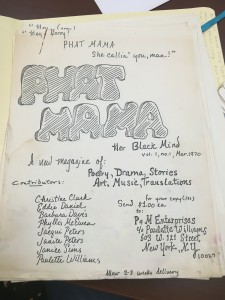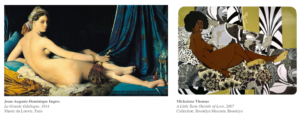“Feelings of love are fundamental in revolutionary practice.” (Havlin 81)
Paired with each other, these readings seem to reach the same conclusion: for revolution to be inclusive and effective, love must be present. Love therefor leads to intersectionality—appreciation and recognition for everyone within a movement produces the most inclusive and thus, successful, activism possible. Both pieces call readers to acknowledge the hierarchical nature of humanity—both transnationally and within communities. Havlin writes, “Vasquez identifies self-awareness about power inequalities among colonized people as necessary components of building collaborations across social and national borders.” (Havlin 91) Essentially, she concludes that power dynamics are present not just between the colonizer and the colonized, but among the colonized as well. There is no society void of some form of hierarchy that is driven by different forms of oppression. Similarly, Thompson writes, “a recognition that race cannot be seen in binary terms; a recognition that racism exists in your backyard as well as in the countries the US is bombing or inhabiting economically.” (Thompson 349) Ideas about race produce stereotypes that are present not just among the dominant, western, white group but also among minority groups. Hierarchies do not simply exist between the dominant group and the “other”—to believe that this is the case when performing activism is a reductionist approach that makes it difficult to recognize other forms of oppression—be they race based or based upon something else.
Havlin’s piece calls readers to recognize the importance of love and emotion in activism. To recognize emotion in activism was an interesting analytical approach that, up until now, I had never considered. The texts I have read thus far have not stressed how important emotion it is, and I theorize that is due to the fact that feminists are hesitant to acknowledge their emotions out of fear of ratifying the stereotype that women are “emotion.” However, as stated earlier in the piece, love (an emotion) is necessary for revolution. This idea also encompasses the need to recognize other forms of oppression alongside the feminist fight. As Thompson’s history of Second Wave Feminism exposes, effective and inclusive feminism is not simply limited to a woman versus man binary. It is recognizing that there many different forms of oppression and privilege that work together to form a person’s positionality. Thompson writes that it is necessary for a white woman to recognize her “position as both oppressed and oppressor— as both women and white.” (Thompson 342) Ultimately, including love and emotion and recognizing hierarchies among even homogenous groups produces a “cross-racial sisterhood” that is “powerful.” (Thompson 347) Intersectionality includes gender and race, but also class, education, ability status, and hundreds more identifiers. In order to create a movement that offers the highest potential for success, activists must love and acknowledge all of these identifiers.
I chose to include the following video a TED talk given by one of the first women to coin the term “intersectional.” Whenever I explain intersectional feminism to people who’ve only been exposed to white feminism (as mentioned directly in Thompson’s piece), I refer them to this video. I felt the exercise she does at the very beginning of this piece in particular to be incredibly demonstrative of the dangers that activism which lacks an intersectional approach produces.





